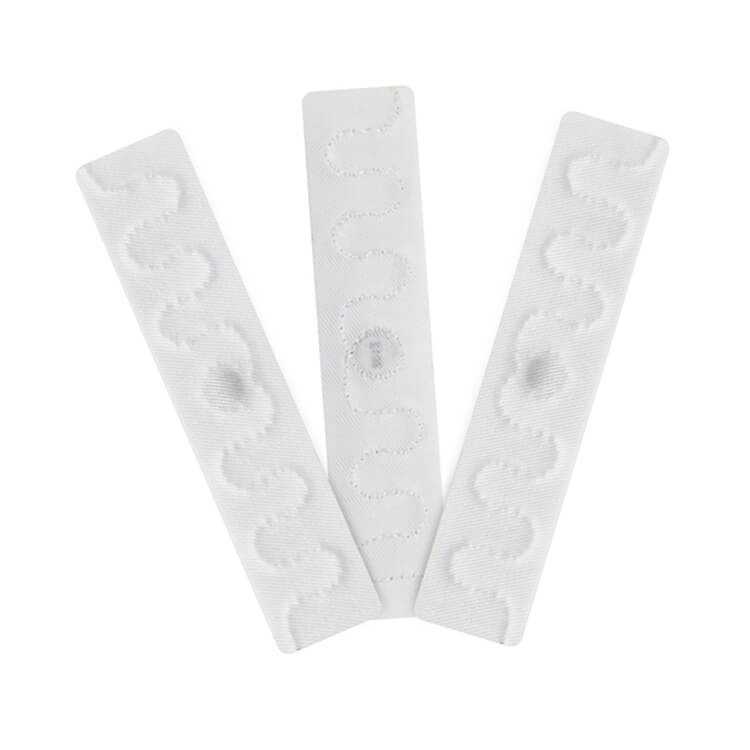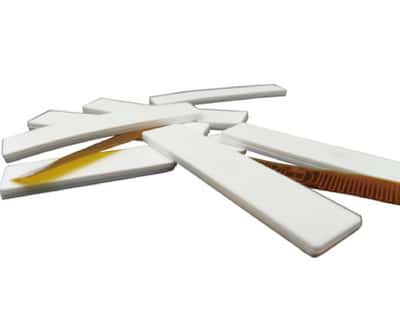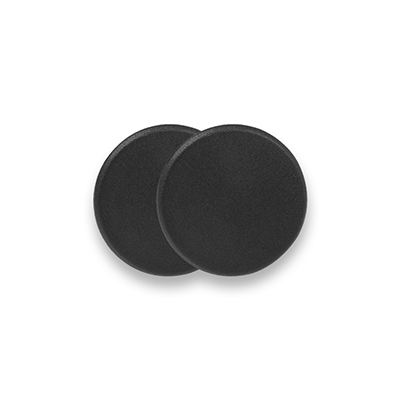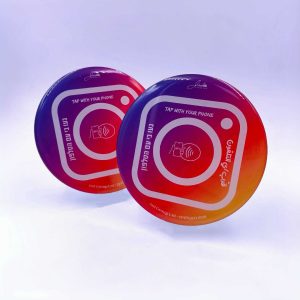RFID technology has advanced quickly in recent years, with new applications and tag types being developed on a regular basis. Many people, however, are unfamiliar with RFID tags and how they function. We define RFID tags in this article and discuss some of their most common applications.
RFID tags: what are they?
An RFID reader can read the signal that an RFID tag emits. Retail, manufacturing, and logistics are just a few of the industries that use RFID tag technology. They include the following elements:
RFID chip Antennae Substrate
The RFID chip stores data about the item to which it is connected. The antennae emit a signal that an RFID reader can detect. The substrate gives the other components strength and support.
The tags typically include a unique identifier that is used to track the tag. When an RFID tag is read by a reader, the identifier can be used to search the database for information about the tag.
With the help of sophisticated software, RFID tags are used. This enables the RFID reader to update a database with information about the tags it reads automatically. This can be used to track inventory or assets in real time, which is extremely beneficial to businesses.
What Are the RFID Tag Components?
Components of an RFID tag, which can vary depending on the application, determine its functionality. At a fundamental level, however, most tag consists of three key elements:
A Microchip or RFID Tag
This is the computer chip that stores and processes data. Depending on its power needs, it can be active or passive. A passive tag, for example, requires an external source of energy to transmit data back to the reader, whereas an active tag has a built-in battery and transmits on its own.
Antenna
To receive signals from the reader and respond with stored data, an RFID tag requires an antenna. The size and shape of the antenna will depend on the type of RFID system being used, ranging from simple dipole antennas to more complex printed coils or patch antennas.
Enclosure/Casing
Most RFID tags have a hard plastic or other type of substrate to protect the chip and antenna. Depending on the application, some tags may also include additional layers of protection, such as RF-blocking film or temperature-sensitive material.
RFID Tag Variety
The type of RFID chip that an RFID tag contains determines its classification. RFID tag types are classified as follows:
RFID tag passives
Battery-assisted passive (BAP) RFID tags Active RFID tags
Most RFID tags are passive. They are powered by the RFID reader’s electromagnetic field. Passive tags are significantly less expensive than active tags, but they have a shorter range.
The RFID chip and antennae in an active RFID tag are powered by a battery. This enables them to have a much greater range than passive tags. Active tags are more expensive than passive tags, but they are worth the extra cost for applications that require a long range.
Battery-assisted passive (BAP) RFID tags include a battery that powers the RFID chip when the tag is out of the RFID reader’s range. This enables the tag to be read from a greater distance than a standard passive tag. BAP tags are more expensive than passive tags, but they combine the long range of active tags with the low cost of passive tags to provide the best of both worlds.
RFID tags can also be classified according to the frequency at which they operate in addition to this. RFID tag technology operates at three different frequencies:
RFID tag technology with low frequency (LF)
RFID tag technology with high frequency (HF) They perform well in any environment, including metallic and wet conditions. However, the read range of these tags is only up to 10 cm. They’re great for livestock tracking, security, and access control.
Frequencies between 3 MHz and 30 MHz are used by HF/NFC RFID inlays and tag. They have anti-collision features that enable multiple tag reading at the same time. Access control, contactless payments, and event management are just a few of the many applications for HF tags.
Frequencies between 300 MHz and 3 GHz are used by UHF RFID inlays and tags. With a read range of up to 10 meters or 100 meters, they are the longest of all RFID tags (active). However, obstacles such as metal and water reduce their efficiency. Applications such as warehouse management and asset tracking use UHF RFID tag technology.
RFID Tags: What They Do and How They’re Used
RFID tag use is simple in your company. The installation is simple, and you will not need to change your current working methods. The entire process of establishing an RFID tag and tag system is as follows:
RFID Tag of Your Choice This entails selecting the appropriate tag for your requirements. Its application will influence the decision. You’ll need an RFID tag with a long read range if you want to keep track of assets in a warehouse. A tag that can withstand harsh conditions, preferably low frequency, is necessary if you need to keep track of livestock.
Create the Tags. On the RFID tag, information is encoded during this process. An RFID programmer can be used to accomplish this. If you need to write a large number of tags, you can use an RFID printer. This allows you to print and encode the tags at the same time.
Install the Tags. Attaching the RFID tag to the asset or location you want to track is done in this process. For example, you would attach an RFID tag to each item in a warehouse to track inventory.
Install RFID readers. RFID readers are used to read RFID tag data. They are available in a variety of configurations, including handheld RFID readers, desktop RFID readers, and fixed RFID readers. Select the reader that best meets your requirements.
Configure the Software. This is the process of configuring the software that will be used to manage the RFID system’s data. Configuring the software to read data from RFID tags and write it to a database is part of this process.
Put the System to the Test. Once the system is up and running, it is essential to test it to ensure that it is performing as expected. This can be accomplished by comparing the data collected by the system to the data in the database.
Keep an eye on your belongings. You can begin tracking your assets once the system is up and running. Depending on your requirements, this can be done in real-time or at regular intervals.
You can hire a professional to help you set up and configure your RFID tag system. This ensures that the system is correctly installed and operating as expected.
Also, make sure to train your employees on how to use the system. This will assist them in comprehending how the system operates and how they can use it to track assets in your company.
How Do RFID Tags Get Attached to Things?
There are numerous ways to attach RFID tags to objects. The most common method is to use an adhesive. Adhesives come in a variety of formulations, including permanent and removable adhesives.
Permanent adhesives are best suited for objects that will not be moved frequently. Removable adhesives, on the other hand, are best suited for objects that will be moved frequently.
Sewing RFID tags onto objects is another popular method of attaching them. This is primarily used with RFID clothing tags and RFID laundry tags.
Other methods, such as rivets, screws, and bolts, can be used to attach RFID tags to objects. Select the method that best meets your requirements.
RFID tags can be attached to almost anything, regardless of size, shape, or material. To prevent the tag from being lost or damaged, just make sure it is securely fastened to the object.
RFID Tags’ Advantages
RFID tag technology has many advantages over traditional barcodes, including:
Line of Sight Is Not Required. RFID tags can therefore be read without being in the reader’s line of sight. This is essential for asset tracking in a warehouse because it allows you to track items on shelves.
Long Reading Distance. Depending on the tag type and reader, RFID tags have a long read range, which means they can be read from a distance of up to 100 meters. This allows you to track assets that are dispersed over a large area, such as a construction site.
Rapid reading speed. RFID tag reading speeds allow you to track a large number of assets in a short amount of time. This feature makes it ideal for businesses with high inventory turnover, such as retail stores.
High Capacity. RFID tags can store more data than barcodes, allowing you to track more asset information. As a result, it can be used in businesses that need to track a lot of data about their assets, such as serial numbers, model numbers, and purchase dates.
Reusable. You don’t have to replace read/write RFID tags every time you need to track a new asset because they can be reused. This is critical for companies that track a large number of assets because it saves money in the long run.
The benefits of using RFID tags are obvious, but there are some drawbacks to be aware of.
RFID tags, for example, have a higher initial cost than barcodes. This is due to the complexity and higher cost of RFID tag and RFID reader. Furthermore, the entire RFID system must be installed and configured, which can add to the cost.
Furthermore, RFID technology raises security concerns. This is due to the fact that an RFID tag can be read without the owner’s knowledge or consent. Therefore, it is critical to take precautions to safeguard the information stored on RFID tag.
Despite these drawbacks, RFID tag is a widely used technology that provides numerous advantages over conventional barcoding systems. RFID tag is a good option if you want to keep track of assets in your company.
















